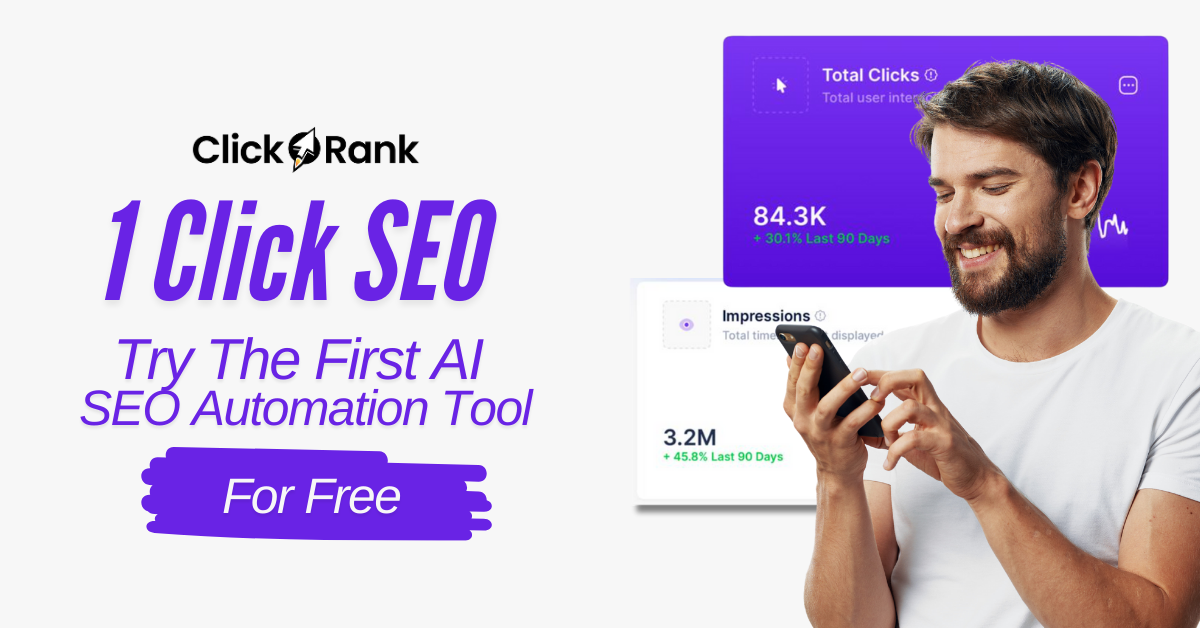Let me tell you about that time I tried searching for ‘best tacos near me’ while starving in a new city—and ended up at a nail salon because their Google Business description said ‘taco Tuesdays available’ (no kidding). That hot mess taught me: if your business isn’t speaking the local search language, you’re missing out. But there’s more to ‘near me’ SEO than adding your address and crossing your fingers. Let’s untangle what actually works (and what’s just guac on your hands).
1. Beyond Your Street Address: Creative Proximity Tactics
When it comes to near me SEO, most businesses think it’s all about being close to the searcher’s physical location. But here’s the twist: Google’s idea of proximity goes far beyond your street address. The search giant blends physical distance with a mix of contextual signals—meaning you can actively influence your local visibility with smart, creative moves. Ready to turn the tables on local search? Let’s dive into inventive proximity SEO techniques that go way beyond your front door.
Proximity Isn’t Just Geography—Google Loves Signals
It’s easy to assume that “proximity” means a simple radius around your business. But for Google Business local search, proximity is a living, breathing concept. Google looks for signals that prove you’re part of the local fabric. As Rand Fishkin puts it:
‘Local context is the secret sauce for discovery.’
So, how do you serve up that secret sauce? By weaving yourself into the daily digital life of your neighborhood. Here’s how:
- Geo-tagged Content: Every time you post a photo, story, or update, add a location tag. Frequent geo-tagged content—especially on Google Business Profile and Instagram—can trigger higher map rankings. Google recognizes these signals and connects you to local searchers.
- Neighborhood Shoutouts: Use local lingo, street names, and neighborhood nicknames in your posts and business descriptions. If locals call your area “The Heights” or “Riverfront,” sprinkle those terms naturally throughout your content. This tells Google (and your customers) you’re truly part of the community.
- Local Partnerships: Team up with nearby businesses for joint promotions, events, or social media campaigns. When you mention each other, tag locations, and share content, you amplify your local relevance in Google’s eyes.
- Community Events: Host or participate in events—think pop-up shops, charity drives, or local festivals. Promote these on your Google Business Profile using the “Posts” feature. Every event post with a location tag is another proximity signal.
Real-World Example: The Florist Who Bloomed in Local Search
Let’s get specific. A local florist wanted to break out of the usual “florist near me” competition. Instead of just updating her address, she started posting weekly “petal pickup” Instagram Stories from different parks and landmarks around her city. Each story was geo-tagged and used popular neighborhood hashtags. The result? A 28% spike in profile views from nearby searches. Her Google Business Profile also saw more engagement, thanks to frequent location-focused posts.
This isn’t just a fluke. Google’s algorithm noticed her active presence in multiple local spots, boosting her relevance for a wider range of “near me” queries. By showing up in the digital and physical spaces her customers frequent, she became the go-to florist for spontaneous flower needs—no matter where in town the search started.
How to Signal Local Relevance: Actionable Proximity SEO Techniques
- Geo-Tag Everything: On Google Business Profile, Facebook, and Instagram, always add a location tag to your posts. Even better, rotate locations if you serve multiple neighborhoods.
- Speak the Local Language: Incorporate neighborhood nicknames, local slang, and references to popular hangouts in your business descriptions and updates.
- Collaborate Locally: Feature other local businesses in your posts, run joint giveaways, or participate in community spotlights. Tag their locations and encourage them to do the same.
- Leverage Google Business Profile Posts: Use the “What’s New” and “Event” post types to share news, deals, and happenings—always with a local angle and geo-tag.
- Encourage Customer Check-Ins: Ask happy customers to check in, leave reviews, and mention your location. User-generated content is a powerful proximity signal.
Neighborhood Nuance: Why Local Context Wins
Remember, local discovery strategies aren’t just about being close—they’re about being relevant. Google wants to see that you’re not just in the area, but actively engaged with it. By layering geo-tagged content, local partnerships, and authentic community participation, you send unmistakable signals that you belong. That’s how you get discovered in “near me” searches, even when your competition is just around the corner.

2. Relevance is More Than a Buzzword: Speak the Local Search Language
Let’s get real about relevance in search: it’s not just a trendy term tossed around in marketing meetings. When it comes to local search optimization, relevance is your golden ticket to showing up in those coveted “near me” searches. If you want your business to pop up when someone types “best tacos near me” or “shoe repair open now,” you need to speak the language of your community—literally and figuratively.
Why Relevance Rules Local Search
Google’s local algorithm is obsessed with relevance. It’s not just about what you offer, but how closely your business matches what locals are actually searching for. If your profile and content echo the words, places, and quirks your neighbors use, you’re already halfway to dominating Google Business local search.
‘Speak the local tongue, and you’ll own the local SERP.’ — Joy Hawkins
Infuse Your Profile with Local Flavor
Think of your Google Business Profile as your digital storefront. To optimize for near me searches, your profile needs to feel like it belongs in your neighborhood. Here’s how:
- Drop local landmarks: Mention well-known spots nearby (“Across from Maplewood Park” or “Next to the old firehouse”). This helps Google—and your customers—connect your business to a specific place.
- Use neighborhood names: Don’t just say “serving the city.” Get specific: “Proudly serving Oak Hill and Riverside.”
- Embrace local lingo: Every town has its inside jokes, slang, or even legendary events. If your city hosts an annual Squirrel Parade, why not mention it? “Stop in before the Squirrel Parade—fuel up on our famous cold brew!” It’s memorable, clickable, and hyper-relevant.
- Highlight seasonal events: Update your posts and offers to reflect local happenings—think “Pumpkin Spice Specials for Harvest Fest” or “Open late during Summer Nights on Main.”
Wild Card: The Power of Quirky Local References
Imagine this: You’re browsing Google for a bakery, and you spot a business bio that reads, “Home of the legendary squirrel-shaped cookies—baked fresh for the annual Squirrel Parade!” Who could resist clicking? These hyper-local, playful touches make your business stand out and signal to both Google and searchers that you’re part of the community fabric.
Encourage Reviews with Local Search Terms
Customer reviews are pure gold for near me SEO. But here’s the twist: reviews that mention local neighborhoods, landmarks, or common search phrases pack an extra punch. Google’s algorithm picks up on these signals, boosting your relevance for local queries.
- Ask for specifics: When requesting reviews, encourage customers to mention what they searched for (“best pizza near Oak Hill”) or their neighborhood (“as a Riverside local, I love this place!”).
- Spotlight local experiences: Share reviews that reference local events or quirks—“We stopped by after the Squirrel Parade and the staff was amazing!”
Seasonal Content: Ride the Local Festivity Wave
Seasonal and event-based content isn’t just fun—it’s a relevance booster. When your posts and offers align with what’s happening in your town, you’re more likely to catch the attention of both searchers and search engines. Try:
- Posting about local festivals, parades, or markets
- Offering specials tied to community events (“Free lemonade during Summer Fest!”)
- Updating your business hours or services for holidays and local happenings
Relevance Means Reflecting Real Community Connections
At its core, relevance in search is about showing you’re not just another business—you’re a neighbor, a fan of the local high school team, a regular at the farmer’s market. When you reflect authentic community connections, you’re not only optimizing for local search—you’re building trust and loyalty.
So, don’t just list your services. Tell your story in the language your neighbors use. Mention their favorite spots, celebrate their traditions, and let your business bio be as unique as your town’s legendary squirrel parade. That’s how you turn relevance from a buzzword into your secret weapon for near me SEO mastery.

3. Unseen Signals: Ratings, Responding, and the Oddball Details Google Loves
When it comes to “near me” SEO, the secret sauce isn’t just about stuffing your Google Business Profile with keywords or setting your location pin. It’s about sending the right signals—those subtle, often-overlooked details that Google’s algorithms love. If you want to truly optimize for near me and dominate local search, you need to show Google (and your potential customers) that your business is alive, active, and uniquely engaging.
Let’s start with the basics: reviews. You already know that ratings matter, but did you realize that how you handle reviews is just as important as the stars themselves? Google Business local search thrives on activity. When you respond to reviews—yes, even the oddball ones about your bathroom décor or the customer who brought their pet iguana—you’re sending a clear message to Google: “We’re here, we care, and we’re paying attention.” This kind of engagement is a powerful freshness signal. As Greg Gifford puts it,
‘Google rewards the businesses that show up, not just those that exist.’
So, don’t shy away from quirky or negative reviews. Respond with personality, professionalism, or even a dash of humor. Not only does this build trust with customers, but it also tells Google’s bots that your profile isn’t gathering digital dust. In the world of local search optimization, a living, breathing profile always beats a static one.
But reviews are just the beginning. The real magic happens when you go beyond the obvious. Regularly updating your business hours, posting about special events, or adding new photos all contribute to a dynamic profile. Here’s where you can get creative: add a few funny or unexpected FAQs. Maybe you answer questions like, “Do you allow dogs in Halloween costumes?” or “Is there a secret menu item named after the owner’s cat?”
Imagine this: a user is searching for a pet-friendly coffee shop around Halloween. They stumble on your business because your FAQ specifically mentions that you welcome dogs in costume. Not only have you captured a hyper-local, highly relevant search, but you’ve also made your business memorable. These oddball details aren’t just for laughs—they’re strategic. Google’s algorithms notice when your profile is updated with unique, relevant content, and they reward you with better visibility in “near me” searches.
Active management is the name of the game. Set-and-forget is the fastest way to fade into the background. Every tweak, every response, and every new detail you add to your Google Business Profile is a signal to Google that you’re invested in your business and your community. This ongoing engagement is what helps you climb the ranks in Google Business local search results.
Don’t underestimate the power of the unexpected. While your competitors are busy with generic updates, you can stand out by highlighting what makes your business different. Maybe you host a monthly trivia night, offer a “bring your own mug” discount, or celebrate obscure holidays. Share these details on your profile. Not only do they make you more discoverable for niche searches, but they also create a sense of authenticity and approachability that both customers and search engines love.
In the end, Google Business Profile tips aren’t just about technical tweaks—they’re about showing up, staying active, and letting your personality shine through. The businesses that dominate “near me” searches are the ones that treat their profiles as living, evolving extensions of their brand. So, respond to every review, update your info often, and don’t be afraid to get a little weird with your FAQs. The more signals you send, the more likely you are to get discovered by locals searching for exactly what you offer.
Remember, in the world of local search, it’s not enough to exist—you have to show up. And when you do, Google (and your future customers) will take notice.
TL;DR: Nail your ‘near me’ visibility by going beyond the basics: optimize your Google Business Profile with fresh tactics, get creative with local signals, and never underestimate the power of relevance and proximity.
You may be interested

